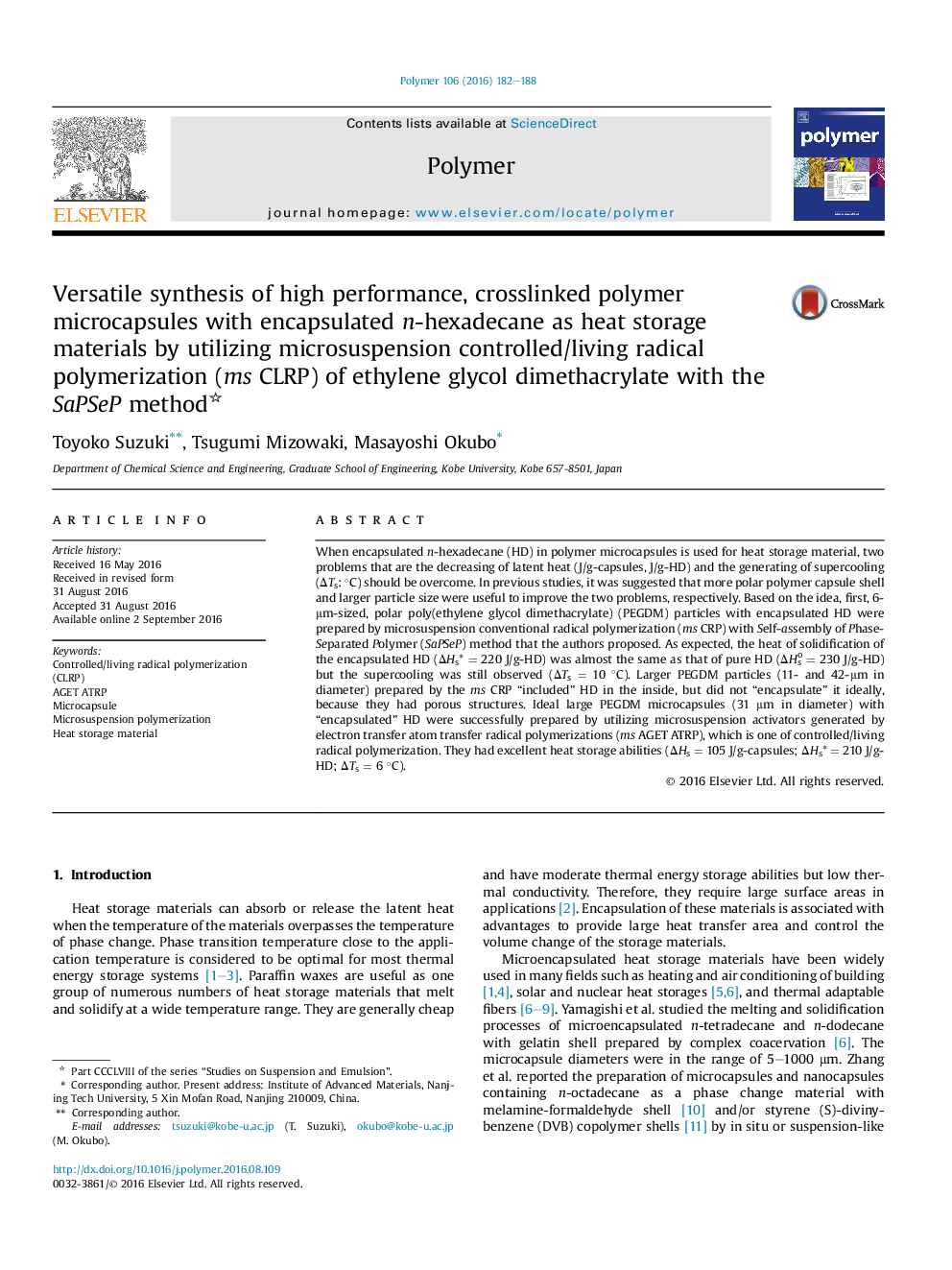| Article ID | Journal | Published Year | Pages | File Type |
|---|---|---|---|---|
| 5178627 | Polymer | 2016 | 7 Pages |
â¢Versatile Synthetic Rout of Polymer Microcapsules Using Microsuspension Controlled/Living Radical Polymerization (ms CLRP).â¢Synthesis of High Performance Polymer Microcapsules with Encapsulated Heat Storage Materials.â¢Microcapsules and Heat storage material.
When encapsulated n-hexadecane (HD) in polymer microcapsules is used for heat storage material, two problems that are the decreasing of latent heat (J/g-capsules, J/g-HD) and the generating of supercooling (ÎTs: °C) should be overcome. In previous studies, it was suggested that more polar polymer capsule shell and larger particle size were useful to improve the two problems, respectively. Based on the idea, first, 6-μm-sized, polar poly(ethylene glycol dimethacrylate) (PEGDM) particles with encapsulated HD were prepared by microsuspension conventional radical polymerization (ms CRP) with Self-assembly of Phase-Separated Polymer (SaPSeP) method that the authors proposed. As expected, the heat of solidification of the encapsulated HD (ÎHs* = 220 J/g-HD) was almost the same as that of pure HD (ÎHso = 230 J/g-HD) but the supercooling was still observed (ÎTs = 10 °C). Larger PEGDM particles (11- and 42-μm in diameter) prepared by the ms CRP “included” HD in the inside, but did not “encapsulate” it ideally, because they had porous structures. Ideal large PEGDM microcapsules (31 μm in diameter) with “encapsulated” HD were successfully prepared by utilizing microsuspension activators generated by electron transfer atom transfer radical polymerizations (ms AGET ATRP), which is one of controlled/living radical polymerization. They had excellent heat storage abilities (ÎHs = 105 J/g-capsules; ÎHs* = 210 J/g-HD; ÎTs = 6 °C).
Graphical abstractDownload full-size image
